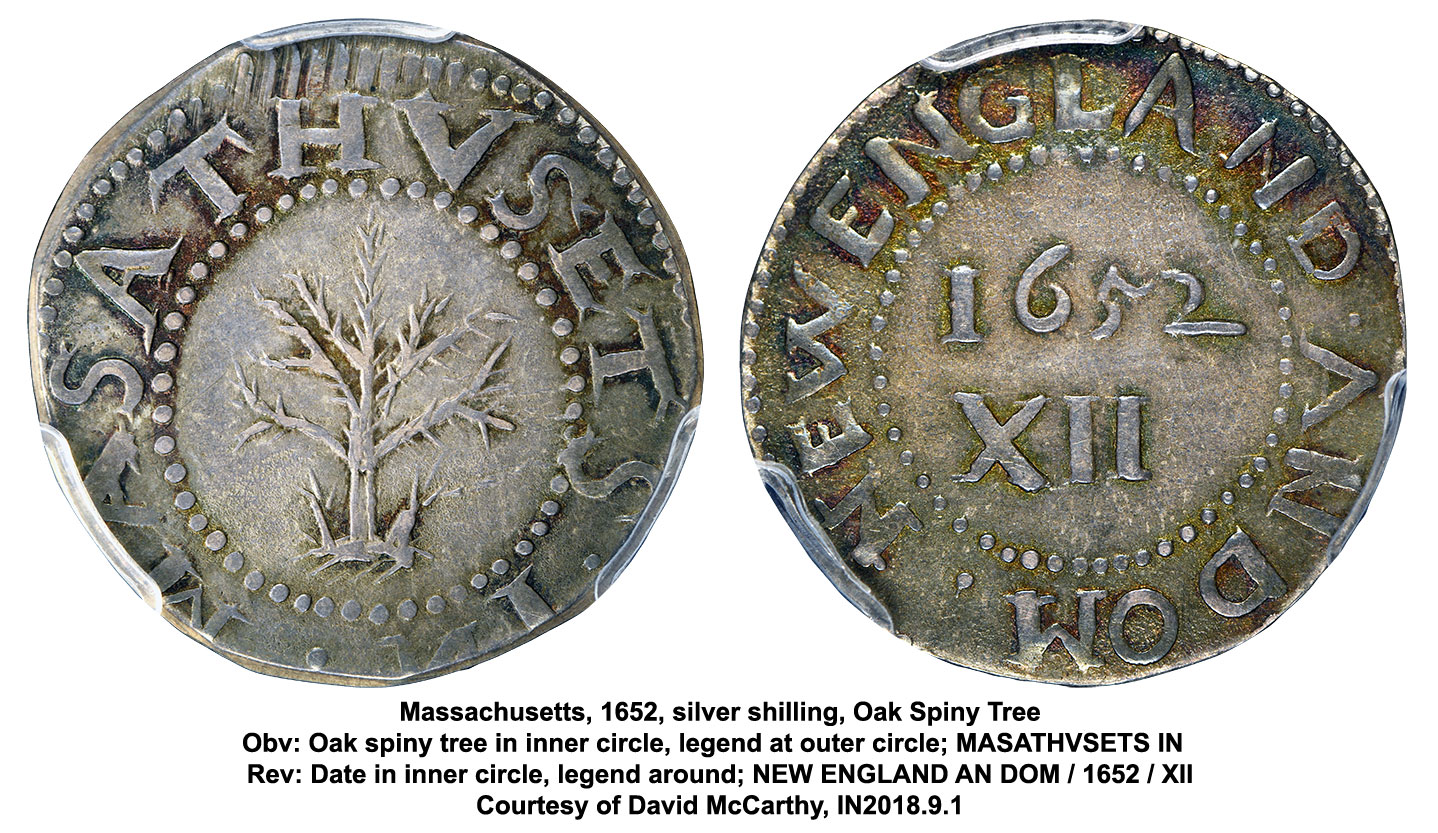

The date “1776” is below and the inscription reads, “Liberty and Virtue.” Massachusetts produced an attractive copper coin, on which the obverse displayed a pine tree, as a symbol of a Cambridge, Massachusetts patriotic society, The Sons of Liberty, and it is inscribed “Massachusetts State.” The reverse is a seated figure, similar to Britannia, which was typical of the copper coins circulating and would ease acceptance. The obverse featured a tree and the inscription, “American Liberty.” The reverse featured a simple harp, which was thought to be taken from one of the Continental Currency notes. In 1776, William Moulton was assigned 100 pounds of copper to coin. New Hampshire was the first of the States after the Declaration of Independence to coin copper. In the initial enthusiasm of independence in 1776, several states made post-colonial copper coinage. Supplies of silver and gold were quite scarce in the colonies and the only coining metal available from domestic mines in any reasonable amount was copper.

Since trade was cut off with Britain, so too was the colonies’ principle source of hard money. Soldiers needed food, clothing and weapons, all which were in very short supply. One of the great problems facing the new Continental Congress was financing the war effort. Obviously, 1776 was a momentous year for the thirteen American colonies, as delegates to the Continental Congress signed the Declaration of Independence, sending notice to England and the rest of the world that the colonies would submit no longer to outside governance and interference. Weak and uneven strikes, wear and basic design flaws are all part of the charm of colonial coins, making them popular for those who appreciate early Americana history. These coins were all produced from handmade dies, creating many different varieties and resulting in a simplistic beauty. Prior to the Mint Act of 1792, everyday business was conducted using a combination of tokens, coins, medals and even counterfeits issued by individuals and private mints, both in the new American colonies and official mints overseas. The colonists were very enterprising and entrepreneurial when it came to their coinage in their fight for independence. The foundation of the Americas is rooted in this early American commerce and the evolution of an accepted monetary system. The need for a more sophisticated medium of exchange demanded that coins be made available, but there was little metal for coins and no mints to produce them. The simple barter economy of the early colonists transitioned into more of a system of commerce that resembled those in Europe, where craftsmen and merchants set up shops in villages on the Atlantic coast. The Indians valued white shelled beads called “Wampum” and used other resources like fur and tobacco for trading.

In the very early colonial era of the 1600a, there was little need and use of coinage, because most trade was with the native Indians who had little to no use for coins.


 0 kommentar(er)
0 kommentar(er)
